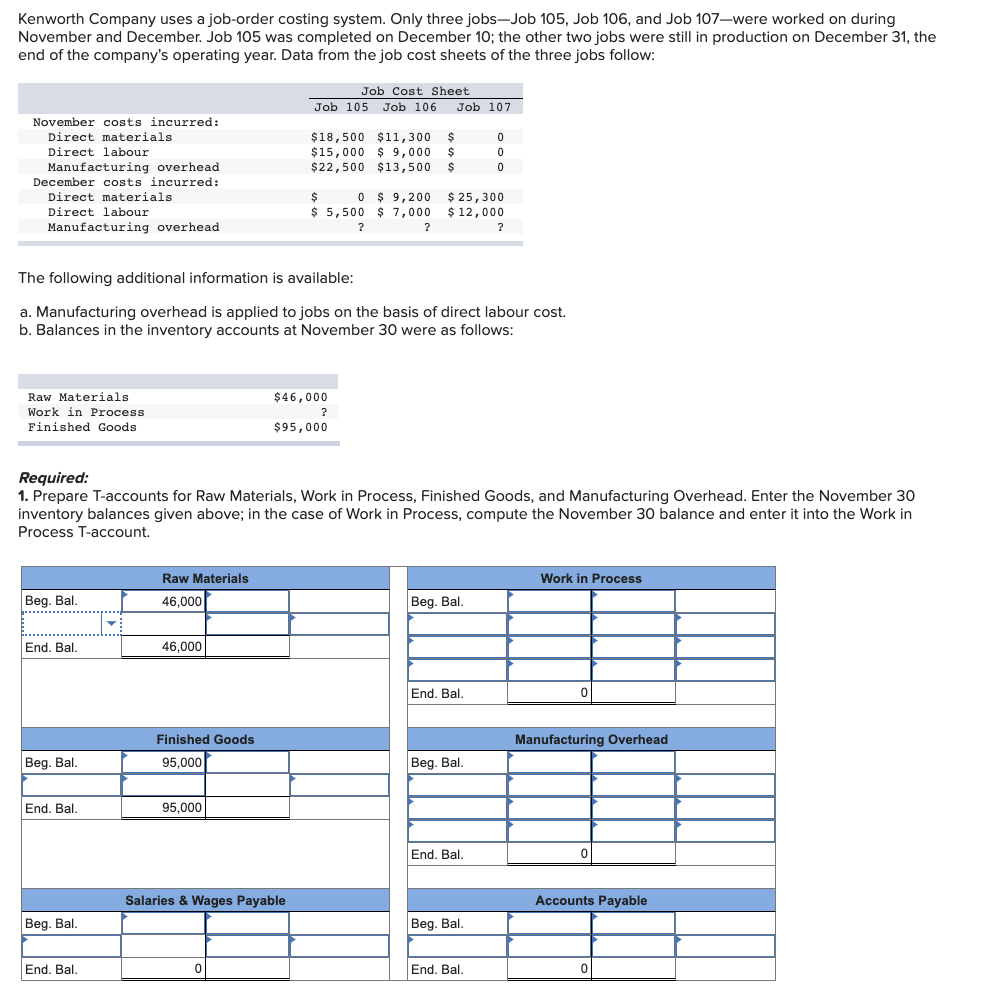Kenworth Company uses a job-order costing system. Only three jobs-Job 105, Job 106, and Job 107-were worked on during November and December. Job 105 was completed on December 10; the other two jobs were still in production on December 31, the end of the company's operating year. Data from the job cost sheets of the three jobs follow: November costs incurred: Direct materials Direct labour Manufacturing overhead December costs incurred: Direct materials Direct labour Manufacturing overhead Job Cost Sheet Job 105 Job 106 Job 107 Raw Materials Work in Process Finished Goods $18,500 $11,300 $ $15,000 $9,000 $ $22,500 $13,500 $ $ 0 $ 9,200 $25,300 $ 5,500 $7,000 $12,000 ? $46,000 $95,000 000 ? ? 0 The following additional information is available: a. Manufacturing overhead is applied to jobs on the basis of direct labour cost. b. Balances in the inventory accounts at November 30 were as follows: ? Required: 1. Prepare T-accounts for Raw Materials, Work in Process, Finished Goods, and Manufacturing Overhead. Enter the November 30 inventory balances given above; in the case of Work in Process, compute the November 30 balance and enter it into the Work in Process T-account.
Process Costing
Process costing is a sort of operation costing which is employed to determine the value of a product at each process or stage of producing process, applicable where goods produced from a series of continuous operations or procedure.
Job Costing
Job costing is adhesive costs of each and every job involved in the production processes. It is an accounting measure. It is a method which determines the cost of specific jobs, which are performed according to the consumer’s specifications. Job costing is possible only in businesses where the production is done as per the customer’s requirement. For example, some customers order to manufacture furniture as per their needs.
ABC Costing
Cost Accounting is a form of managerial accounting that helps the company in assessing the total variable cost so as to compute the cost of production. Cost accounting is generally used by the management so as to ensure better decision-making. In comparison to financial accounting, cost accounting has to follow a set standard ad can be used flexibly by the management as per their needs. The types of Cost Accounting include – Lean Accounting, Standard Costing, Marginal Costing and Activity Based Costing.

Trending now
This is a popular solution!
Step by step
Solved in 4 steps with 2 images









